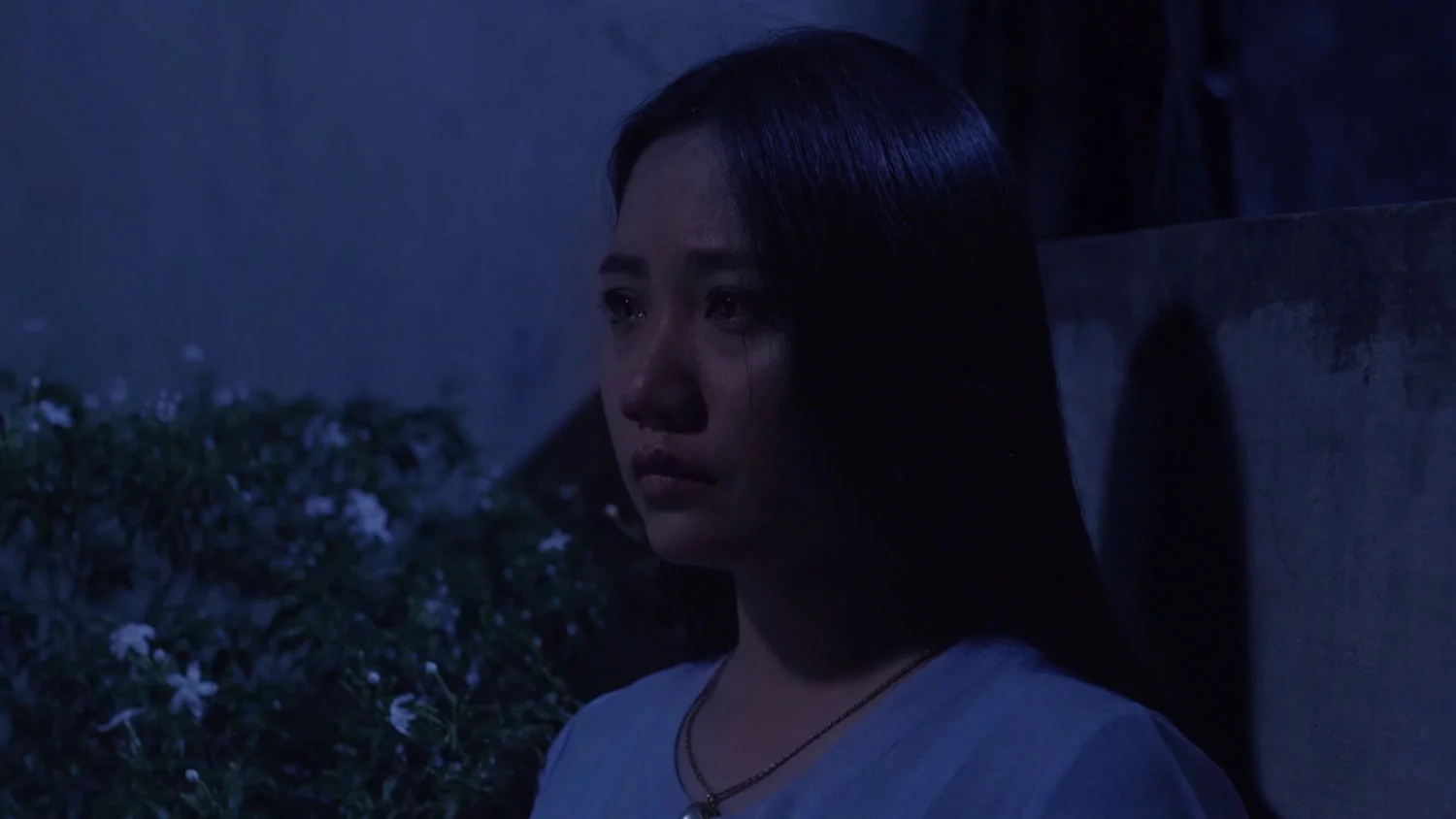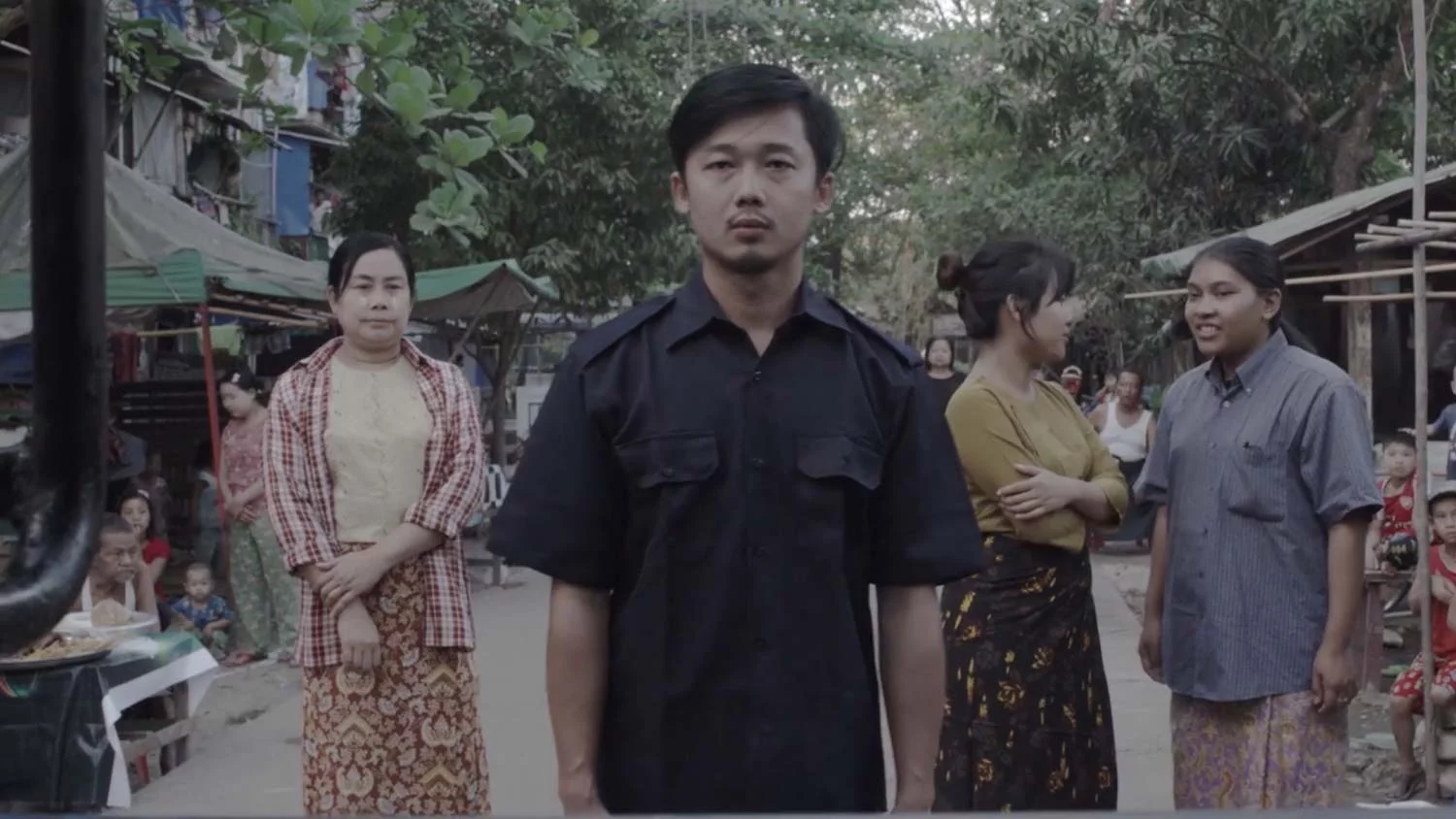The Consequences of Intimacy
By Clement Yue
Everyone has heard of the butterfly effect. When a butterfly in Chicago flaps its wings, a tornado is formed in Tokyo. Whatever small actions we make, they leave a lasting impact on ourselves and the people around us. Getting intimate with other people is like chucking a boulder into a kiddy pool; the ripples are going to be enormous, and that rings true on screen.
Aung Phyoe’s Cobalt Blue is an investigation on just how far those ripples can travel and how destructive they can be to anyone in their path. It is the year 1998 in Yangon, and in the midst of civil unrest during the 8-8-8-8 uprising, a mother and son are trapped in quiet sorrow. They are about to move away from Yangon due to the husband/father’s relocation there. Both of them have found relationships with Aung Ko, a family friend who dreams of working on a ship but has no money to. Aung Ko is at in the eye of the storm. As the concentric circles of the relationships he’s built with this family tighten, they spring apart violently as the time moves them further apart.
Aung Ko has a tight relationship with everyone in the family except possibly the father who he addresses as “sir”, the formal bearing is kept probably because of social standing and that the father pays him for helping out around the house. He is much more familiar with the mother and the son, and this is what leads to his downfall.

Cobalt Blue, dir. Aung Phyoe, 2019: The mother tearfully considers Aung Ko’s offer to go see Upper Burma with him.
The relationship between the mother and Aung Ko extends far below the surface. They clandestinely meet in the middle of the night, she passes him a used English textbook and he extends his invitation to her to see Upper Burma with him someday. She watches on with tears in her eyes, her entire body clothed in a wan blue light. The scene changes and the camera pans slowly to her son watching the scene unfold from the balcony. From then on she barely interacts with Aung Ko anymore, doesn’t say bye to him as they leave in the truck and even asks her husband not to lend the family money to support Aung Ko as he endeavours to find work on a ship. Why this sudden coldness? Maybe it’s a defence mechanism on her part, an attempt to distance herself from the relationship, from potential infidelity and to protect herself from inevitable hurt. It’s as if she chopped him off after that night when they met under the house and she used fire to cauterize the wound.
Aung Ko’s relationship with the boy is more complex. He gets the boy a goodbye card that plays music when he opens it, he wants to take the boy out, he feels like an older brother to him. After the boy witnessed the scene below the house between Aung Ko and his mother, he is increasingly hostile to Aung Ko, tearing apart the farewell card, refusing to be touched by him. The boy has been incredibly hurt by what he saw, too immature to properly process what’s going on yet mature enough to understand that wrong has been committed. He rejects the relationship between his mother and Aung Ko, accusing him of getting the farewell card for someone else and threatening to tell on him, possibly to the father.
It seems as though Aung Ko is being squeezed on all sides, and the film makes us sympathise with him as his relations with the family fall one by one like dominos. In the last scene he is the only one dressed in black, his figure diminishing as the truck pulls away, he walks towards the truck as though he wants to catch up to it but stops abruptly. Aung Ko watches the truck leave with shoulders slumped, his ties severed from the family both physically and metaphorically.

Aung Ko watches on, all in black, as the truck leaves him behind in the dust.
As we consider the moral greyness of the situation, Aung Ko and the mother should not be behaving in this way, meeting in the dark like teenage lovers, especially behind the husband’s back. However, the screen never shows the relationship being sexually consummated and the audience is left in suspense to what the status of the relationship really is. Are they justified in being pillars of support for each other or does it cross the line into adultery? Where is the line? Wherever it is, their actions have torn apart the relationship between Aung Ko and the boy, who know views him with suspicion and a sense of wrongdoing that he is too young to understand. His mother recognises this when he tears the farewell card in front of her and she looks at him with tear rimmed eyes. She recognises the end of an era and goes about preparing herself for it by cutting Aung Ko off. Moral ambivalence on screen is a technique used to enhance realism and to create well-rounded and complex characters. The film, through the questionable relationships onscreen reflect the instability of life off of it, especially when framed in the context of a American trade embargo and the uprising.
The butterfly theory boils down to the consequences of actions, and Aung Ko is reaping the consequences of his intimate relationship with the mother, and they have left him reeling, unsure, and left behind, reflecting the state of the country and a generation lost to dissonance.
– Clement Yue